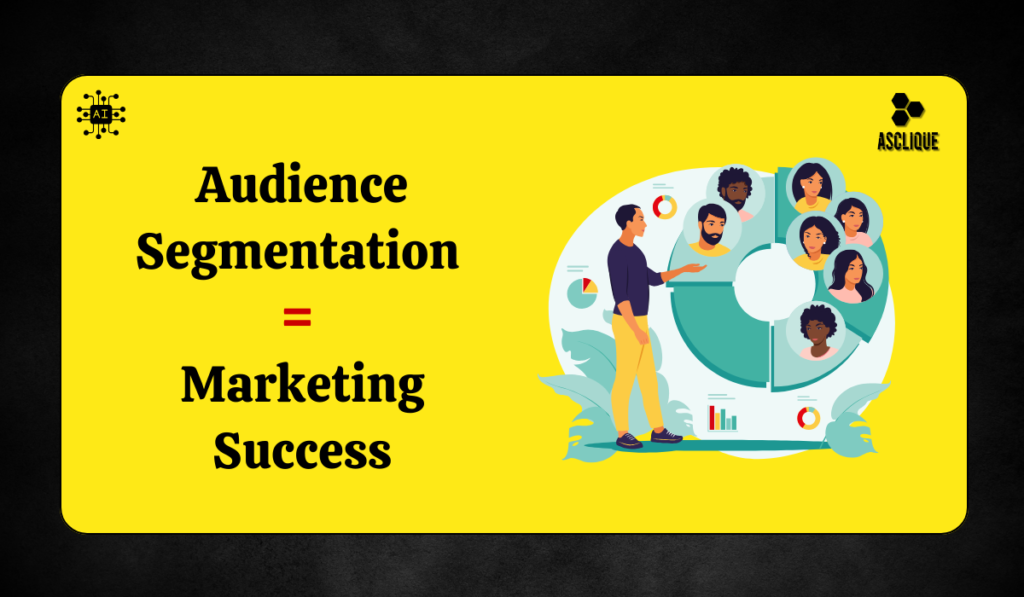Audience segmentation is a technique of breaking up your audience into smaller groups based on common characteristics-behavior, demographics, or interest. You do not mail everyone the same thing. Rather, segmentation lets you tailor content for specific needs to make your marketing better and even more interesting. Now, let’s see how this strategy can boost your inbound marketing efforts.
What Is Audience Segmentation?
Audience segmentation is breaking up a large audience into smaller groups with similar characteristics. It might be demographics like age or income, behavior, such as purchasing habits, location, or merely interests and values.
So, instead of putting everyone into one basket, you should put emphasis on what makes a group different from others and, therefore, create messages that are more likely to come across people at your level.
Instead of firing the same bullets at everyone, it sends information to the right audience with the right messaging. For instance, a clothing retailer may send messages on summer wear to customers located in warm areas and winter jackets to customers living in cold climates.
Such a focused approach delivers effective marketing as it reaches out specifically to each of the segments’ needs and preferences.
Why Audience Segmentation Is Essential for Modern Inbound Marketing
Today’s consumer expects personalization. According to a McKinsey study, 71% of customers want a company to deliver personalized interactions and are frustrated when it does not with 76% of the customers. Without segmentation, your marketing campaigns risk becoming general rather than effective.
This means that the knowledge of and categorization for your audience helps to send the right messages at the right time, thus being ‘made to order’ for them: it induces more engagement, a higher conversion rate, and loyalty.
Key Benefits of Audience Segmentation for Inbound Marketing
Improved Email Campaign Performance
Segmented mailings open 14.3% more and click through 100.95% more than non-segmented mailings. For example, targeted price cuts based on past purchases are more effective than sending mass emails.
Higher Lead Conversion Rates
Not every lead is at the same point in the purchasing process. Depending on where in the awareness, consideration, or decision process they happen to be, you can send content tailored to their needs, which in turn nurtures them to the next step.
Optimized Social Media Engagement
Audience segmentation on Facebook and Instagram allows you to customize the content according to individual interest, demographics, or behavior. It enhances engagement and ensures that your message is correctly tailored to your audience.
Cost-Effective Paid Campaigns
By segmenting the audience, it means your ads are served to most relevant groups. It saves someone their money by reducing unnecessary ad spend on uninterested audiences and improves return on investment.
Different Types of Audience Segmentation
1. Demographic Segmentation
This means breaking up your audience into groups of age, gender, income level, or educational background. For example, a company dealing with skincare may have different items for young adults and the aged.
2. Behavioral Segmentation
Behavioral segmentation is based on activities of customers, such as purchasing behavior, website click-through rate, or engagement behavior. It helps define future behavior and creates proactive campaigns.
3. Geographic Segmentation
Segmentation by location helps when your target is spread across regions since you can create regional offers. Retailers use it in promoting what is seasonal or regionally relevant.
4. Psychographic Segmentation
This includes personality characteristics, values, and lifestyle. For example, a company marketing to the environmental-cause consumer uses psychographic segmentation by communicating its green products.
Real-World Example: Netflix’s Use of Audience Segmentation
There are examples of how the facet of segmentation works in increasing inbound efforts. For instance, a recommendation engine from Netflix takes into account how many of its users watch what, from where, and what rating they gave them, then it suggests more content; thus, recommendations are kept personalized and engaged.
Practical Steps to Implement Audience Segmentation
- Analyze Your Data: Review existing customer data including purchase history and site behaviour.
- Create Buyer Personas: Create personas to find out what your ideal customer looks like and what they need.
- Segment and Test: Separate your audience on meaningful criteria, then test your campaigns in order to see what resonates best.
- Use Automation Tools: Leverage the power of tools like HubSpot or Mailchimp to automate segmented campaigns.
Conclusion
So, how can audience segmentation enhance your inbound marketing efforts? It is a way of delivering the right message to the right people at the right time. You would be able to optimize your ad spend, build meaningful relationships with your customers, and boost engagement at a higher conversion rate of leads to paying customers.
FAQ’s
What is audience segmentation?
The process of breaking the broad audience into smaller groups, with regard to the behavior and demographics, is referred to as audience segmentation.
How does segmentation improve email marketing?
Email marketing is strengthened by segmentation since it delivers a more focused message, which is always thought to have higher open and click-through rates.
What is the difference between demographic and behavioral segmentation?
Demographic research focuses on factors like age or gender, whereas behavioral research focuses on actions, like site visits or purchasing behavior.
Can audience segmentation reduce marketing costs?
Yes, segmentation ensures that your campaigns hit the correct market and thus have a better ROI and waste fewer dollars on uninterested groups.

